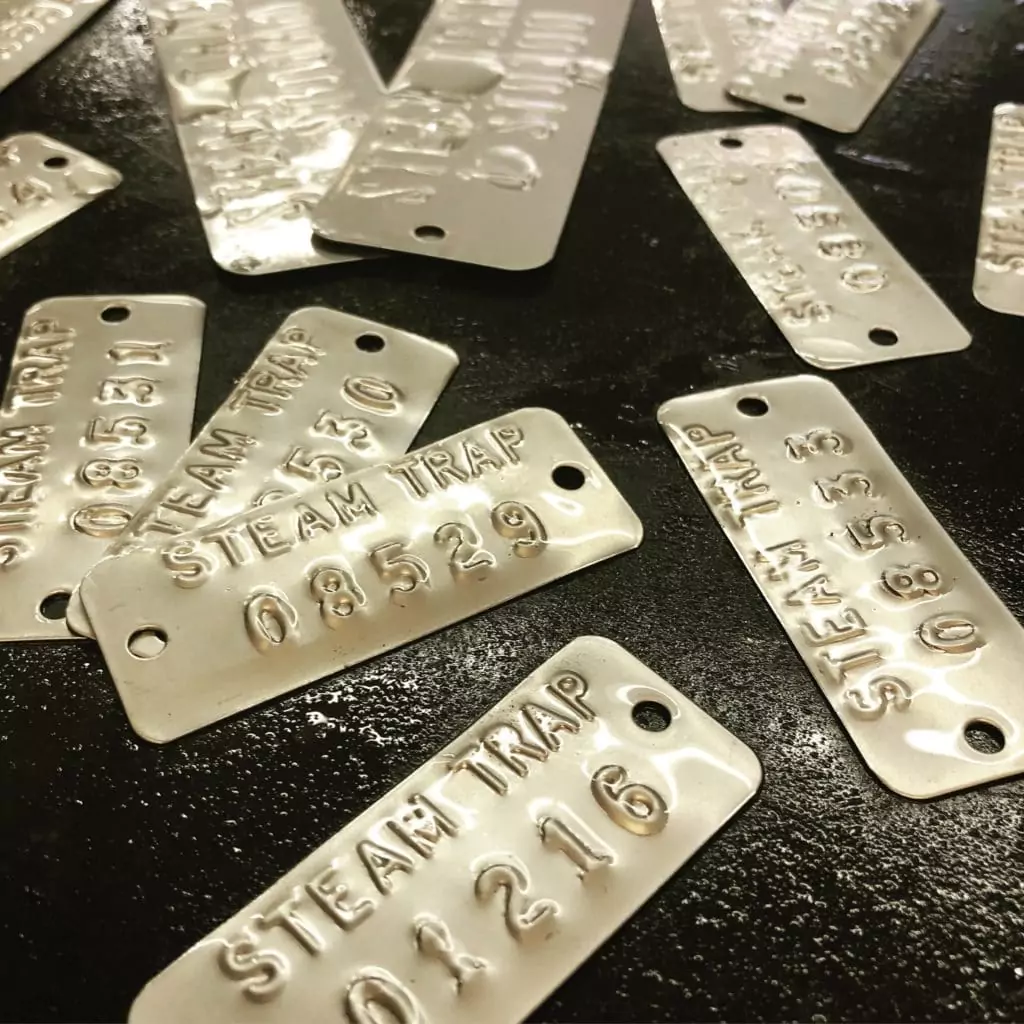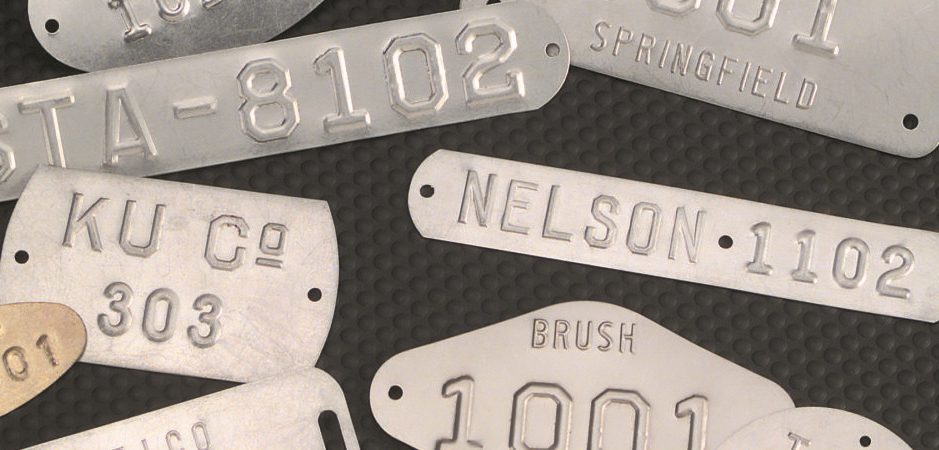Mining Tags
Safety is one of the fundamental components of the mining industry. Safety guidelines are crucial as underground mining can be an extremely dangerous occupation if the proper procedures are not followed.
From accurate warning labels to tracking mining tags, metal nameplates serve as an important piece of safety for miners.
Applications
Safety
The United States Department of Labor regulates work environments and sets forth procedures and standards for organizations to follow.
The Department of Labor publishes a Code of Federal Regulations (CFR) on an annual basis. This outlines many policies and laws for many facets of employment. Title 30 of the CFR, is focused on mineral resources and labor laws regarding their procurement.
A division of the DOL, the Mine Safety and Health Administration (MSHA) creates the guidelines for this section to strengthen safety in mining operations. Chapter I.§57.11058 specifically covers the Check-in/Check-out System for mining operations.
Check in/Check Out System
As per the MSHA regulations, every mine must maintain a check-in and check-out system to provide a record of who comes in and out of the mine.
The traditional method for this system is a board full of metal identification tags. Before you enter the mine, you place your metal tag on the board. This gives a very simple record of those currently underground. When the worker exits the mine, they simply remove their tag from the board.
As shifts change, there will be an operator who makes sure the previous shift has completely checked out of the board before the next shift checks in.
There are many benefits to using the check-in/check-out method. For example, if there is a large blast to be scheduled, a quick but thorough examination of the board will ensure nobody is left within the blast radius.
Similarly, in the event of an emergency (i.e. a collapsed mine shaft) there is a full ledger of everyone still in the mine. This helps emergency first responders and rescue teams know exactly how many people to be looking for.
The advent of RFID tracking technology has led some larger mines to adopt active-based tags in lieu of a traditional board system.
Marking Equipment
Modern day mining operations require a slew of heavy machinery and equipment. From lifts and loaders to crushers and graders. All of this equipment is typically marked for informational purposes. This often includes manufacturer and usage information.
Equipment and other assets are also often tracked using metal asset tags. A simple numbering system or barcode for scanning turns a machine into a traceable asset. Mined resources can also be tracked using identification labeling. This allows monitoring, automation and process improvement of the entire operations.
Types of Tags in Mining Operations
Barcodes, QR codes, and Data Matrix code tags can all be added to provide a wealth of information with a quick scan.
For more simplified tracking, nameplates with serialized numbers are added to equipment, tools, and other resources.
As mentioned, other information can be found marked on equipment such as operating information, safety precautions, and other info.
Some modern mines have begun adopting RFID tracking technologies in their operations. Beacons are placed throughout the mine. By carrying a specialized RFID tag, workers can be tracked through a location system.
This allows for more accurate tracking and improved safety, as opposed to the check-in/check-out system.
This type of active system requires a significant investment in infrastructure, much more than standard passive tags.
Durability
When working in rough conditions, durability becomes a major focus when selecting the right tools to use. Equipment must be able to hold up to the rigorous environment. This is equally true for metal identification.
Tags and nameplates will often be exposed to dust, debris, and other substances. In some cases chemical exposure is a possibility as well.
With a dirty/gritty environment, tag legibility can be a challenge. Selecting a process which is easily cleaned as well as highly durable can make the difference between an effective solution or not.
Materials
A spark inside of a mine can cause a fire or explosion, both of which are often fatal to anyone inside the mine. Fire not only will lead to smoke inhalation but can quickly deplete the oxygen from a mine shaft.
Due to its nonferrous properties, brass has been the standard material for mining nameplates for decades. The brass material is such that it will not produce a spark when in the mine.
Marking Processes
Stamping
Stamped tags have historically been used for check-in/check-out tags. Their simple indentation is extremely durable and not going to simply fade away over time.
The stamped characters are easy to read, and can be produced with sequential numbers to fill out the board. Numbers can be assigned to specific workers, or just used to track the total number of employees in and out.
While stamped tags are great for this application, their design can be concealed by dirt, making them hard to read. Fortunately, a quick cleaning can leave the tags good as new.
Embossing
Embossed tags offer the benefit of raised designs in the brass material. These characters are highly visible, even when partially concealed by dirt and debris. They offer the same long-lasting durability as indented designs as well.

Wrap-Up
Custom tags and nameplates have been a key part of the mining industry for decades. Check-in/check-out boards provide a means to track those in the mine, while data plates mark machinery and safety information.
With safety such a high priority in the mines, it’s no wonder why such an emphasis is put on durable identification solutions.
REQUEST A FREE QUOTE
FILL OUT THE FORM, OR GIVE US A CALL:
Let us create a custom solution tailored to your unique needs and challenges.
The Metal Marker Advantage
We work with you closely to deliver high-quality tags that fulfill your expectations. And we’re honest when something is infeasible or impractical. We’ll propose an alternative solution that satisfies your requirements, budget, and timeline.







